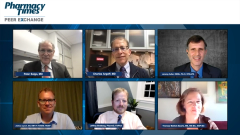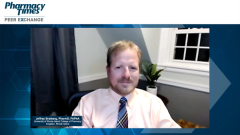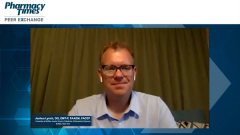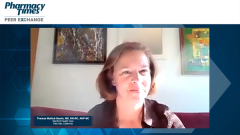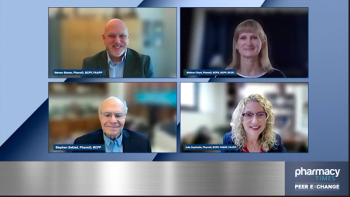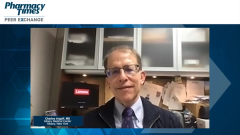
Essential Patient Education Considerations for Naloxone
Experts share approaches to normalize conversations about naloxone with patients, as well as share important considerations for maximizing naloxone education.
Episodes in this series

Peter Salgo, MD: What are some things that physicians and clinicians should keep in mind when they talk to patients about naloxone? Maybe it is an easy sell to clinicians; the stuff that we are talking about is straightforward and we cannot find a clinician who would disagree. How do you counsel patients? What do you tell them? What is the approach you want to use? Jeremy, do you want to start speaking on that?
Jeremy Adler, DMSc, PA-C, DFAAPA: It is critical that, when you frame it, you are not identifying that they have done something wrong. You are not saying to the patient, “I think you are at such a risk of having an overdose with this medication that I must give you naloxone.” I think it is important to say instead that this is a part of basic community protection. This is for the patient’s good, and it is for those around them; accidents can happen. This is something that is standardized, and it should be talked about everywhere. Your pharmacist is going to be aware when you fill this at the pharmacy. This is not an unusual prescription; this is just how we manage opioids these days, with the risks that we know about.
It is also important that we talk to patients, at the same time, about how they can reduce some of these accidents. For example, they can avoid accidents by not diverting their medication, not giving it to other people, and keeping it secured and locked away. The patients need to be doing things to reduce the likelihood that somebody will get the drug and have an overdose where naloxone is needed. It provides a nice forum to have a conversation with your patients about risk. Patients know there are problems with opioids. It would be very hard to find a patient who was unaware that opioid misuse in this country is causing issues and harm. This is part of the solution. This is how we make sure that opioids are available to those people who actually need them, and we also try to reduce the harm caused by the unintended abuse and misuse of these drugs.
Peter Salgo, MD: I think it is worthwhile to be saying to patients, “This is a drug that has an issue. It is not necessarily you; it is the drug. The drug is necessary, but like any other drug, it has [adverse] effects, and here, we have something that can help with that and help you with that.” That would make us able to take the onus off the patient, I would suppose.
Do you bring, or should you bring, family members, other caregivers, and associates into this discussion, and how do you do that?
Jeremy Adler, DMSc, PA-C, DFAAPA: There is no question; I think everybody needs to be on the same page. Everybody needs to know how to use it; everybody should be pretty comfortable talking about this issue. This is about safety. It is about potentially reviving somebody who has overdosed. It is important that everybody is on the same page. Discussing this in a nonjudgmental, nonthreatening way is the key to success when having this discussion. It is not going to be a comfortable conversation for everybody the first time they hear it, but when they hear it from us, the pharmacist, their other providers on the team, in the [emergency department]—suddenly, it is going to click that this is just a normal conversation.
Joshua Lynch, DO, EMT-P, FAAEM, FACEP: Depending on the circumstances in the emergency department [ED] after an overdose—if the visitors or family who are in with the patient understand what is going on and we are allowed to discuss the details of the patient’s care with them—we have that discussion right there, right in front of everyone. Usually, we start our pitch by saying, “We have public health-funded naloxone right there. We can get you all some naloxone to take home with you, so that this hopefully does not happen again in your home. Let’s talk about it really quick—it takes 30 seconds to explain how to use it and when to use it—you can’t screw it up. If you give it, and it’s not opioids, you are not going to do any harm.” Usually, those discussions go fairly well, and I think families are surprised, and maybe a little relieved, that we are taking a proactive step to say, “We have it here, right now, for free for you. You do not have to ask about it; you do not need to feel uncomfortable about it.” Usually, patients’ families and friends take us up on the offer.
Theresa Mallick-Searle, MS, RN-BC, ANP-BC: I want to say, in the ED, it’s a no-brainer. When people have a family member or a friend they take to the ED who almost dies from an opiate overdose, I am sure that they will be more than willing to have that conversation. How do you have the conversation with a patient, maybe a patient you’ve inherited, who is on high-dose opiates that nobody has ever talked to them about before? Maybe they have heard something from the pharmacist, or maybe the pharmacist is the first person who talks to them about getting naloxone. Then they are coming back to you, looking at you like you have some responsibility. How do you have those conversations? I think, as Jeremy said, you normalize it. I like to use the analogy of treating a patient with diabetes. We have talked about patients who are diabetic. You do not give somebody insulin and not show them how to use glucose. These are normal conversations you have with a patient, and we must continue normalizing it by talking to our peers and sharing our experiences.
Peter Salgo, MD: Do you know what I have heard? I’ve heard the following comment: “I don’t want to talk about naloxone because that is going to encourage the continued use of opioids. I want to talk about getting off of opioids, and to heck with the naloxone. It is a crutch.” How do you deal with that?
Jeffrey Bratberg, PharmD, FAPhA: That comment is part of the public stigma.
Peter Salgo, MD: That’s what I’m getting at, sure.
Jeffrey Bratberg, PharmD, FAPhA: You have to say that it is universally recommended; this is universally effective against all opioids. We just heard in our research meeting this week that there are people who do not know that fentanyl is an opioid. They do not know that it goes both ways. When you say, “Here is an opioid antidote, or here is an antidote,” there is no moral hazard associated with naloxone. There is no such thing as naloxone parties. People who are given naloxone use less, get referred to treatment more, and of course, die less. It’s a no-brainer. That just has to be part of that education.
Peter Salgo, MD: Is there an assumption, among practitioners, that someone else did it? They may say, “I don’t have to give this talk because this patient already had it, or this person, in their last encounter with their last caregiver, must have [had the discussion]."
Theresa Mallick-Searle, MS, RN-BC, ANP-BC: Some assume that the pharmacist will do it.
Peter Salgo, MD: Right.
Joshua Lynch, DO, EMT-P, FAAEM, FACEP: We look for any opportunity we can, at any time, to get out of difficult circumstances. Most of us, for the most part, enter into those difficult and hard conversations on a regular basis because it is what we do. We know they are important; we know we have to do it.
But if given the opportunity to pass that up—no matter whatever is going on in the health care professional’s life or practice, whether they are being pressured with their schedule—if there is an inkling that this is going to happen tomorrow, I think there is the opportunity for that discussion to be delayed or passed up. However, this type of discussion really cannot be delayed, and if there are opportunities to do it—we’ve talked about this many times already—
repeated opportunities and repeated discussions with patients are the only way that things are going to stick, especially with things that are stigmatized such as opiate use, naloxone, buprenorphine, or medication-assisted treatment.
Theresa Mallick-Searle, MS, RN-BC, ANP-BC: I think you have to make the opportunity. You cannot just say you will discuss it if you have time. You have to make the opportunity. I think we would all agree that there’s an ethical aspect to this. We are in health care because we want to help people, so I think we are all of like minds, but there is also a legal responsibility that we have now, too. If you are the prescriber who says, “I don’t want to deal with this; I’m not going to prescribe naloxone and I don’t want to deal with opiate prescribing,” then that is your prerogative, but you are not doing the best for your patient. You’re going to have to take legal responsibility for this now.
Transcript edited for clarity.
Newsletter
Stay informed on drug updates, treatment guidelines, and pharmacy practice trends—subscribe to Pharmacy Times for weekly clinical insights.

